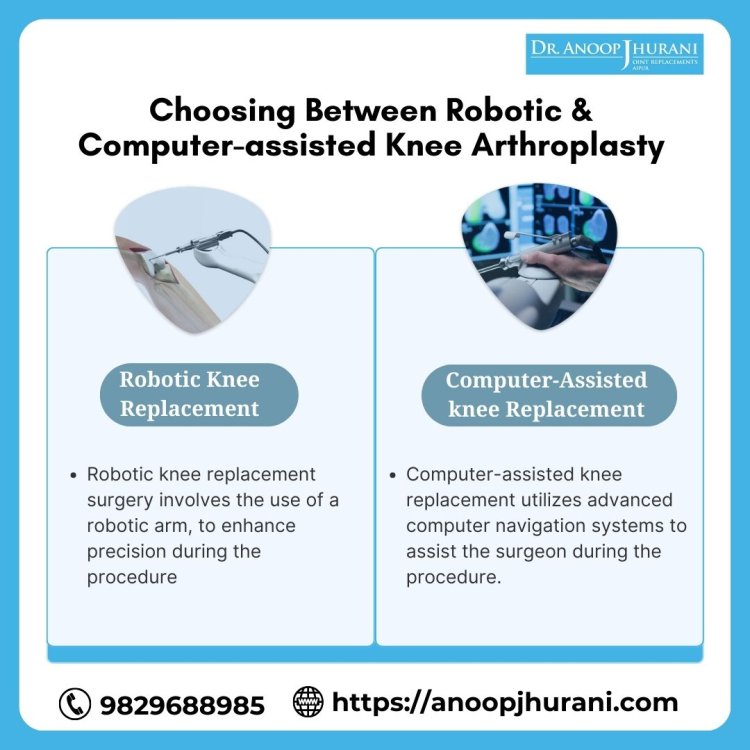Choosing Between Robotic and Computer-Assisted Surgery
Dr. Anoop Jhurani is one of the doctor for knee and hip replacement surgery. Contact us at +91 9829019985
Share this Post to earn Money ( Upto ₹100 per 1000 Views )

The field of knee replacement surgery has witnessed remarkable advancements, offering patients not only relief from pain but also innovative options for precision and efficiency. Two leading technologies, robotic knee replacement, and computer-assisted knee replacement, have emerged as transformative approaches. The key considerations and differences between these techniques guide individuals in making an informed choice for their knee health.
Understanding Robotic Knee Replacement:
1. Precision Redefined: Robotic knee replacement surgery involves the use of a robotic arm, guided by advanced imaging technology, to enhance precision during the procedure. This technology allows for meticulous planning, damaged tissue removal, and prosthetic joint implantation.
2. Personalized Approach: The robotic system enables a highly personalized approach to knee replacement. It considers each patient's unique anatomy, optimizing implant positioning and overall outcomes.
3. Real-Time Adjustments: The robotic system provides real-time data during surgery, allowing the surgeon to make immediate adjustments for optimal alignment and balance. This level of feedback contributes to enhanced accuracy.
Exploring Computer-Assisted Knee Replacement:
1. Surgical Navigation: Computer-assisted knee replacement utilizes advanced computer navigation systems to assist the surgeon during the procedure. These systems offer real-time guidance, aiding in precise alignment and implant placement.
2. Enhanced Accuracy: Similar to robotic technology, computer-assisted systems enhance the accuracy of knee replacement surgery. By providing detailed information on joint anatomy, these systems contribute to improved outcomes.
3. Customized Alignment: Computer-assisted systems allow for the customization of alignment based on the patient's unique anatomy. This individualized approach contributes to better joint function and stability.
Key Considerations for Choosing Between the Two:
1. Complexity of the Case: The complexity of the knee condition plays a role in the choice between robotic and computer-assisted surgery. Robotic systems, with their real-time adjustments, may be preferred for more intricate cases.
2. Surgeon's Expertise: The surgeon's familiarity and expertise with either robotic or computer-assisted technology are crucial. A skilled surgeon experienced in a particular system can optimize the benefits offered by that technology.
3. Patient Preferences: Patient preferences and comfort with technology also play a role in the decision-making process. Some individuals may feel more confident with the precision offered by robotic systems, while others may prefer the guidance of computer-assisted technology.
Conclusion:
To choose between robotic and computer-assisted knee replacement surgery, the guidance of Dr. Anoop Jhurani becomes an indispensable asset. His expertise, coupled with a patient-centric approach, ensures that individuals are equipped with the knowledge and support needed to make an informed decision. With Dr. Jhurani as a trusted partner, patients can navigate the path toward a pain-free and active life with confidence and clarity.







